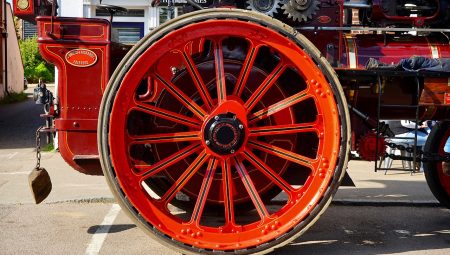Engine mounts are the unsung heroes of your vehicle’s structure. These components play a pivotal role in securing the engine to the chassis, acting as a buffer that absorbs vibrations and supports the engine’s weight. Imagine driving a car without these mounts; the engine would shake uncontrollably, leading to a chaotic driving experience. Not only do they enhance performance, but they also contribute significantly to passenger comfort by minimizing the vibrations that reach the cabin. Without proper engine mounts, your ride would feel like a rollercoaster on a bumpy road!
Have you ever noticed how a stable chassis feels when you take a corner? That’s the magic of chassis stability at work! A stable chassis is crucial for maintaining control while driving, ensuring safety, and reducing wear and tear on vehicle components. It’s like the foundation of a house; if it’s shaky, everything above it is at risk. Chassis stability not only enhances your driving experience but also keeps passengers comfortable by limiting the vibrations they feel. So, next time you hit the road, remember that a stable chassis is your best friend!
When it comes to engine mounts, there are several types to consider, each with its own set of advantages and disadvantages. The most common types include:
- Hydraulic Mounts: These use fluid to absorb vibrations and provide a smoother ride.
- Solid Mounts: Known for their durability, but they can transmit more vibrations to the cabin.
- Polyurethane Mounts: A blend of both worlds, offering a balance between comfort and performance.
Choosing the right type of engine mount can significantly influence your vehicle’s performance, noise levels, and overall driving experience.
It’s essential to recognize the signs of worn engine mounts before they lead to more severe issues. Look out for:
- Excessive vibrations while driving.
- Unusual engine movement during acceleration or braking.
- Strange noises, such as clunks or bangs, especially when shifting gears.
Addressing these symptoms promptly can save you from costly repairs down the line!
The condition of your engine mounts directly affects your vehicle’s performance. Well-maintained mounts can enhance stability, improve handling, and provide a smoother ride. Think of them as the glue holding everything together; if they’re worn out, your driving experience can suffer dramatically. On the flip side, deteriorated mounts can compromise safety, making it crucial to keep an eye on their condition. Regular inspections can help ensure that your engine mounts are in tip-top shape, keeping your ride safe and enjoyable.
Understanding Engine Mounts
Engine mounts are crucial components in your vehicle, acting as the bridge between the engine and the chassis. Think of them as the unsung heroes, tirelessly working to absorb vibrations and support the engine’s weight. Without these mounts, your ride would feel like a rollercoaster, with every bump and jolt transmitted directly to the cabin.
These mounts come in various designs, each tailored to meet specific needs. For instance, hydraulic mounts use fluid to dampen vibrations, providing a smoother ride, while solid mounts offer enhanced performance for high-speed driving by minimizing engine movement. Polyurethane mounts fall somewhere in between, combining durability with a degree of comfort.
In short, understanding engine mounts is essential for anyone who wants to maintain a stable, comfortable, and safe driving experience. Ignoring their condition can lead to significant issues down the road, affecting not just performance but also safety. So, keep an eye (and ear) out for any signs of wear!
The Importance of Chassis Stability
Chassis stability is not just a fancy term; it’s the backbone of your vehicle’s performance and safety. Imagine driving down a winding road; a stable chassis allows you to navigate those curves with confidence, almost like dancing with your car. When your chassis is stable, it enhances control, making every turn feel smooth and effortless. Without this stability, the risk of losing control increases, especially during sudden maneuvers.
Moreover, a well-stabilized chassis reduces wear and tear on critical components, prolonging their lifespan. Think of it as a sturdy foundation for a house; without it, everything above is at risk. This stability also translates to passenger comfort, minimizing vibrations that can turn a pleasant ride into a bumpy experience. So, if you want to ensure a safe and enjoyable driving experience, paying attention to chassis stability is non-negotiable!
In summary, here are some key points about chassis stability:
- Enhanced Control: Better handling during turns and sudden stops.
- Reduced Wear: Extends the life of suspension and steering components.
- Improved Comfort: Minimizes vibrations for a smoother ride.
Types of Engine Mounts
When it comes to engine mounts, understanding the different types is crucial for optimizing your vehicle’s performance. Engine mounts are not just simple supports; they play a significant role in how your car handles and feels on the road. The most common types include hydraulic, solid, and polyurethane mounts. Each type has its own unique characteristics and benefits.
Hydraulic mounts are designed to absorb vibrations and provide a smoother ride. They contain fluid that helps dampen engine movements, making them ideal for luxury vehicles where comfort is a priority. On the other hand, solid mounts are made from rigid materials and offer the best performance for racing or high-performance cars. They ensure minimal movement, providing a direct connection between the engine and chassis, which enhances responsiveness.
Finally, polyurethane mounts strike a balance between comfort and performance. They are more durable than rubber mounts and provide better vibration control while still allowing some flexibility. Choosing the right engine mount type can significantly influence your driving experience and vehicle longevity.
| Type of Engine Mount | Benefits | Drawbacks |
|---|---|---|
| Hydraulic | Excellent vibration absorption, smooth ride | Can be costly, potential for leaks |
| Solid | Direct engine connection, improved handling | Increased vibrations, less comfort |
| Polyurethane | Durable, balanced performance | Can be stiffer than rubber, noise increase |
Ultimately, the choice of engine mount depends on your driving style and the type of vehicle you own. Whether you prioritize comfort, performance, or durability, understanding these types will help you make an informed decision.
Signs of Worn Engine Mounts
Recognizing the is essential for maintaining your vehicle’s performance and safety. When engine mounts start to fail, they can create a range of issues that not only affect your driving experience but can also lead to more serious problems down the line. Have you ever felt your car shaking more than usual? That’s one of the first indicators!
Some common symptoms include:
- Excessive vibrations: If you notice more vibrations than normal, especially during acceleration or idling, it’s time to investigate.
- Engine movement: If you can see or feel the engine shifting, particularly during hard stops or acceleration, your mounts may be shot.
- Unusual noises: Clunking or banging sounds when shifting gears can indicate that the engine is not secured properly.
Ignoring these signs can lead to more severe issues, such as misalignment of the drivetrain or even damage to other components. So, keep an eye (and ear) out for these telltale signs to ensure your vehicle remains safe and enjoyable to drive!
Impact on Vehicle Performance
The condition of engine mounts plays a crucial role in determining your vehicle’s overall performance. Imagine driving a car that feels like it’s dancing on the road; that’s what worn-out engine mounts can do! When these mounts are in good shape, they ensure that the engine remains stable, which directly translates to better handling and control.
On the flip side, if your engine mounts are deteriorating, you might experience:
- Excessive vibrations that can make your ride uncomfortable.
- Engine movement that can lead to misalignment and further mechanical issues.
- Unusual noises that can be alarming and indicate underlying problems.
In essence, well-maintained engine mounts contribute to a smoother ride and safer driving experience, while neglected mounts can compromise both safety and performance. It’s like trying to balance on a tightrope; even the slightest shift can throw you off. So, keep an eye on those mounts!
Frequently Asked Questions
- What are engine mounts?
Engine mounts are crucial components that secure the engine to the vehicle’s chassis. They help absorb vibrations, support engine weight, and maintain overall stability, which is essential for both performance and comfort.
- How do I know if my engine mounts are worn?
Signs of worn engine mounts include excessive vibrations, noticeable engine movement, and unusual noises when driving. If you notice these symptoms, it’s important to have them inspected to prevent further issues.
- What types of engine mounts are available?
There are several types of engine mounts, including hydraulic, solid, and polyurethane mounts. Each type has its own benefits and drawbacks, affecting performance, durability, and noise levels in your vehicle.
- Why is chassis stability important?
Chassis stability is vital for vehicle handling and safety. A stable chassis enhances control during driving, reduces wear on components, and improves passenger comfort by minimizing vibrations.





